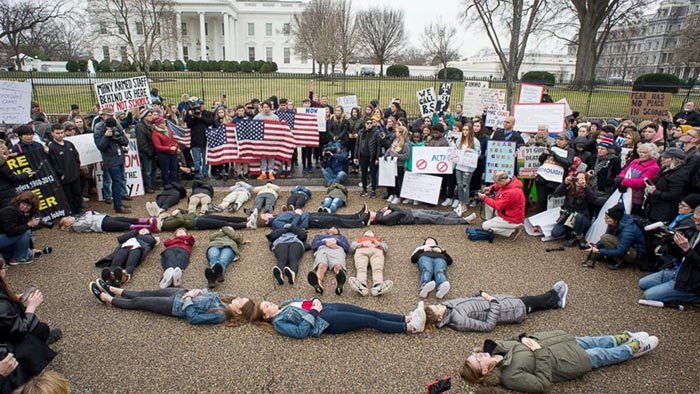
The Bipartisan Safer Communities Act provides over $2 billion to expand mental health services, improve learning conditions and enhance school safety.
From K-12 Dive
By Anna Merod
June 27, 2022
With the enactment of the $13 billion Bipartisan Safer Communities Act, schools will have an influx of available federal funds to put toward expanding mental health supports and improving learning conditions and school safety.
President Joe Biden, who has urged financial support for student mental health, signed the bill into law Saturday. The first overhaul in gun legislation in nearly 30 years, the law also targets school safety with these provisions:
$1 billion in new funding through Title IV-A of the Elementary and Secondary Education Act to lift up activities for student learning conditions, such as evidence based-practices that foster positive school climates.
$500 million for the School Based Mental Health Service Grant Program to increase the number of mental health service providers.
$500 million for the School Based Mental Health Service Professionals Demonstration Grant program to train and diversify the pipeline of counselors, social workers and psychologists in schools.
$300 million through the STOP School Violence Act to improve school violence prevention efforts.
$240 million for programs raising awareness about mental health among school-aged children and teens, and to connect students who have potential behavioral health issues with needed services.
$50 million for the 21st Century Community Learning Centers program, which invests in extracurricular, after-school and summer programs.
$28 million to support trauma care in school settings.
The bill’s passage occurred a month after the tragic mass shooting at Robb Elementary School in Uvalde, Texas, that killed 19 students and two teachers.
The bipartisan gun safety legislation marks an acknowledgment that the work to address student mental health is important, said Amanda Fitzgerald, assistant deputy executive director of the American School Counselor Association.
“In some state legislatures, we’ve seen some conversations about not necessarily prioritizing social and emotional wellbeing, but this is a message loud and clear,” Fitzgerald said. “It was bipartisan that this work is so important, and lawmakers understand that school professionals are on the front lines to really be able to work with students to maybe identify needs or provide prevention services.”
Fitzgerald said it isn’t completely clear when the funding could be available or how exactly districts will be able to access it — whether through federal grants or state education agencies.
Meanwhile, here are four practices experts recommend education leaders consider now and as the funds become available.
1. Begin hiring more mental health professionals
While concerns are real that federal funding to hire new mental health professionals in schools is limited and could create a fiscal cliff, using the new federal allocations to do so will provide an immediate return on investment, Fitzgerald said.
It’s worth taking advantage of the funding now and finding other routes to fund those same positions later, she said. This is especially important considering the current average counselor-student ratio nationwide is 1:427, while ASCA’s recommended ratio is 1:25, Fitzgerald said.
2. Balance evidence-based safety practices with a critical eye
Education leaders should be wary when choosing how to use new federal investments in school safety policies — even if they are evidence-based, said Meg Caven, a senior research associate on school safety at the Education Development Center.
For example, evidence-based policies on adopting more police presence in schools have documented detrimental effects on students of color, she said.
“There’s risks to picking up an intervention that looks really good on paper without thinking really carefully about — what is the context we’re going to implement this, and who are the people most affected, and where are their voices in the evidence-based [practices] that tells such a rosy story about this particular approach,” Caven said.
3. Build community coalitions
Administrators can use this moment to lay the groundwork for building a community-based coalition to help establish new school safety policies with these latest federal dollars, Caven said. These coalitions could include students, parents and historically marginalized groups.
The coalitions could then track what policies are working and those that are not, Caven said.
“In helping with the planning and implementation of this money, I think it is really critical that we put in place very early the infrastructure to collect good culturally responsive and racially equitable data about the implementation of these programs as they get off the ground,” she said.
4. Reach out to state education agencies soon
The $240 million stream of funding over four years set for educating youth about mental health will be coordinated through state education agencies, said Hannah Wesolowski, chief advocacy officer at the National Alliance on Mental Illness. For administrators looking to build or improve on their mental health awareness programs, she suggests reaching out to state education agencies soon to gear up for the funding.
“This is a great opportunity to provide more training for school personnel, to build those education programs, to really build everyone’s awareness of mental health conditions and where to go for help,” Wesolowski said.
Photo: ABC News
Read this and other stories at K-12 Dive

